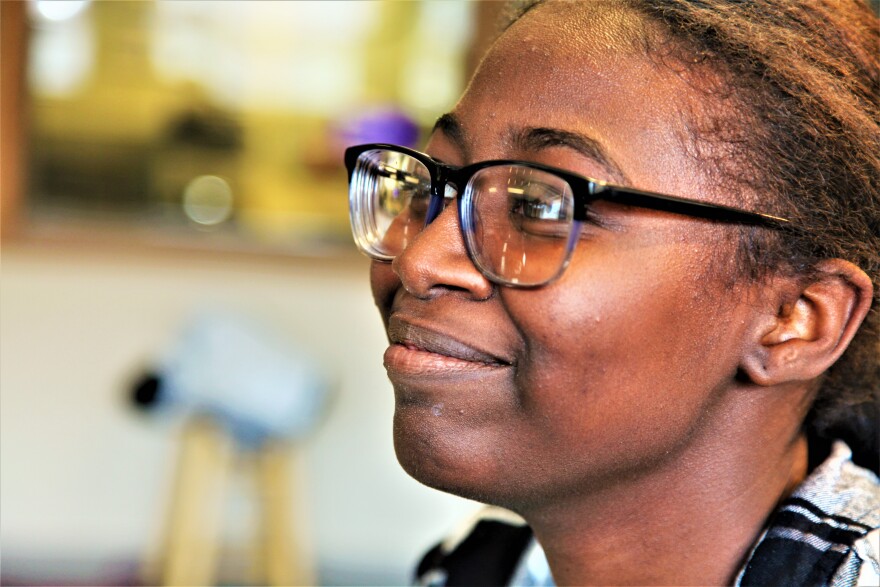Most of us know our culture's classic myths and fairytales about Santa Claus, the Tooth Fairy and Little Red Riding Hood: But how does it feel when a young person learns the truth about the stories handed down from generation to generation. This week on Dayton Youth Radio we'll find out from one teenager who has some strong feelings about how parents lovingly mislead their kids.
My name is Malina Hampshire, and I am 16 years old. My favorite color is blue; the color blue is like way better than other colors to me. I love to read, watch movies, and I love to listen to music. My story is about fairy tales, not the Disney versions that ended with that happily ever after, but the original editions that made them unique.
I believe that passing down stories to each generation is the best tradition because they have so many meanings and lessons to be learned like teaching children to be careful around strangers, it's bad to lie, don't become greedy, etc.
When I was about 7, I remember watching "Cinderella" and "Sleeping Beauty" and listening to stories like "Little Red Riding Hood" and thinking, what’s the point of this story? So I decided to look into my favorite fairy tales to see what was missing, and as I got older I realized that the original editions included endings or details that weren’t so happy.
Last month, I was given a first edition copy of The Brother’s Grimm translated by Jack Zipes that I hadn’t even known existed. It contained the original stories of "Cinderella", "Rapunzel", "Sleeping Beauty" and many others. The book was a puzzle piece, backing up articles and videos all claiming that these tales were darker than the ones we were told.
I learned that in "Cinderella", her stepmother urged her sisters to cut off a bit of their foot to be with the prince. Snow White’s Stepmother was actually her real mother, who wanted her daughter’s heart as proof of her death, and Snow White was only a child. In "Hansel and Gretel", their stepmother was their real mother., who decided to abandon them in the woods. And in "Little Red Riding Hood", the Wolf’s stomach was filled with stones and he was skinned right after his death.
It was an eye opener that these original tales showed that the world was not a happy-go-lucky place. Learning these things gave me mixed emotions. I couldn’t tell if I was happy to discover these stories, or angry or sad because they weren’t being told in their original fashion. It made me sad, because when children discover the truths of world, the modern fairy tales that they would grow up to love would become just stories that gave false hopes about society. Not everything that happens in real life is going to be a happy experience, not everyone that you'll meet will be good. These are things that children really need to know.
But if we keep changing the stories, we lose what made those stories so great and the lessons that come with them. Changing the tale for the sake of making it happy for kids, takes away some of the reality the story was told for. I want to know, from parent to teenager, why we do this to our stories, why are we shielding our children from the reality of these tales so much? They can do so good in preparing them for society.
Think about for just a second, what life would have been like for you if the tales you knew growing up were told in the original form. Do you think you'd have a better perspective?
Malina Hampshire is a student at the Dayton Early College Academy. To learn more about DECA, visit the school's website: http://daytonearlycollege.org/ Special thanks to Anne Rasmussen, Director of Community Involvement at DECA.
Dayton Youth Radio is supported by the Virginia W. Kettering Foundation and the Ohio Arts Council.



